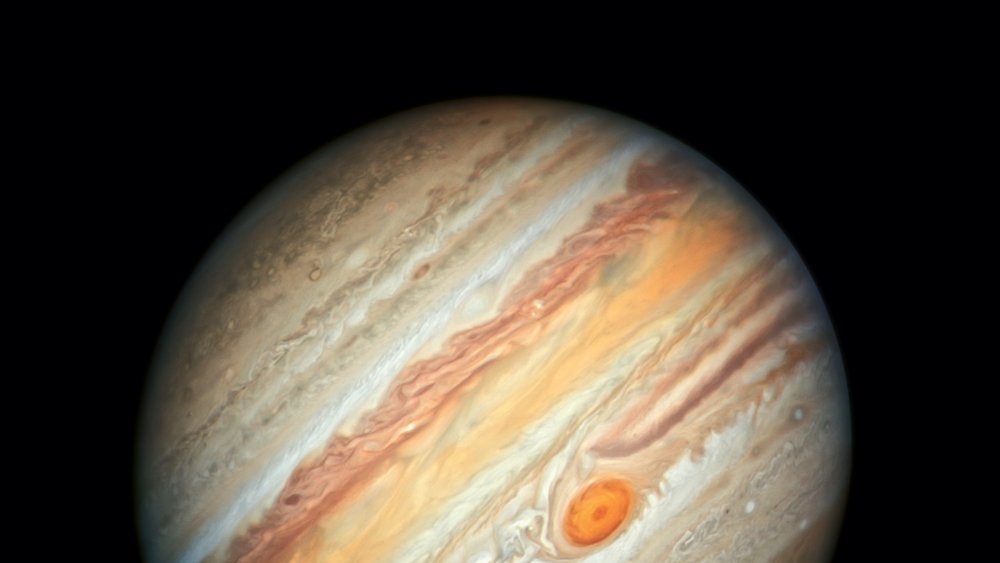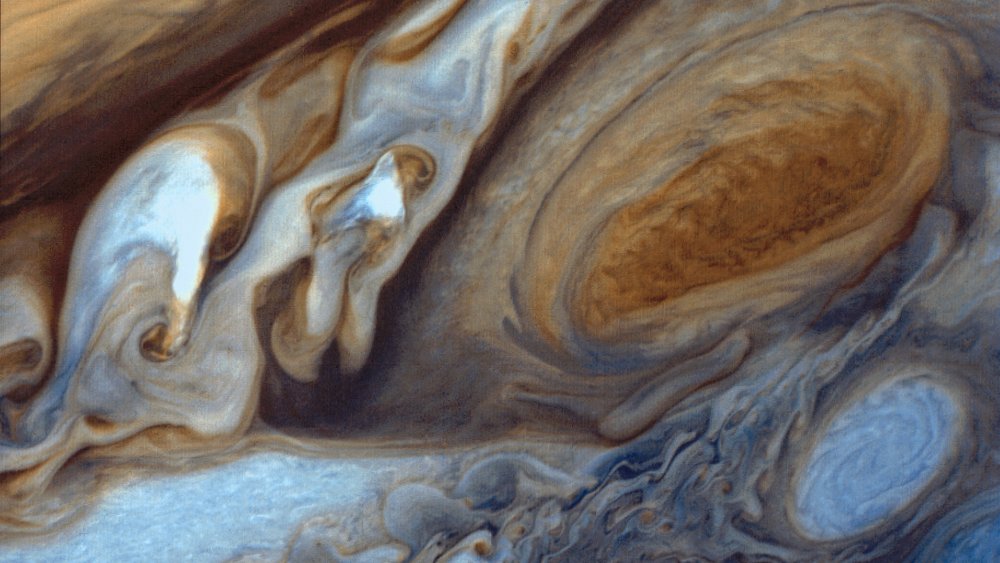This Is The Biggest Planet In Our Solar System
Jupiter: Age-old astrological symbol of enlightenment, justice, the progress of civilization, and largest planet in our solar system. It was associated with Zeus to the ancient Greeks: thunderbolt-wielding chief deity amongst gods and humans, who overthrew the titan Cronos and became a symbol of authority and wisdom to the world; Brihaspati in the Hindu tradition, who aided the also-thunderbolt-wielding Indra in the war to overthrow... yet again, the titans (asuras); and Marduk to the ancient Babylonians, wise, chief god of their pantheon and wielder of... thunderbolts. And don't forget, in the later-developed Norse tradition: Thor. Notice a trend?
The ancient Romans gave the planet its current, common name when they essentially copy-pasted Zeus into their own pantheon and Latinized his name, per Universe Today. As one of the most visible celestial bodies in the night sky aside from the Sun and Moon, it makes sense that so many ancient cultures deified the 5th planet from the sun. Myths and legends and prevailing tales about the planets and their role in human affairs, agricultural seasons, and our very survival, depended on the conjuration of belief as deep as religion. And even more basic: the stars and planets captured the curiosity of our ancestors same as they do us.
Even without the mythological aspect, Jupiter is a prominent, easy-to-study element of modern astronomy, with a host of features that boggle the mind.
Aspirations of being a star
Jupiter is a "gas giant," meaning there is nothing solid hiding under its striated, red-and-orange atmosphere. At least, we don't think so, because as NASA describes, anything that tried to penetrate the turbulent exterior would be immediately crushed by gravity 2.5x Earth's. If there is some kind of metal, likely iron, or mineral, compressed deep within the gaseous exterior of hydrogen and helium, it would exist at about 50,000 degrees Celsius (90,000 degrees Fahrenheit). The planet's enormous magnetic field, roughly 16-54x that of Earth, extends all the way to the next planet in our system, Saturn, and can churn up swirling storms of particles that could easily damage spacecraft.
Despite being so massive (2.5x larger than all the other planets in the solar system combined), there's no danger of Jupiter becoming a star, like our sun, because it doesn't have nearly enough mass to initiate nuclear fusion. As it is, if the planet gained any additional mass, its density would actually cause it to shrink. Even weirder, the Red Planet's days are the shortest of any in the solar system, at 10 hours, and while it's 484 million miles away from the sun, it makes a full orbit in only 12 years.
For such a large cosmic presence, it makes sense that Jupiter has attracted its fair share of moons: 67, in fact. One of them, Ganymede, in the true spirit of its parent planet, is the largest satellite in the solar system. Jupiter has a series of rings, as well, likely the debris of meteors that smashed into the planet.

